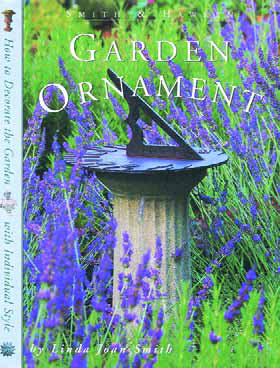sculpture
The avant-garde composer John Cage once said, “Art exists to make us aware of the very life we’re living.” I’ve always loved that statement because, as someone working to create works of art, the experiences of my own life have naturally been transferred into the way I’ve chosen to express myself – and, I hope, have enabled me to succeed in bringing other people to an awareness of experiences in their own lives. For me, water is the key in these transferences: Even though I’m probably more often described as a sculptor of natural stone rather than as a watershaper, the dialogues I have with the materials I use and with those who observe the outcomes have always begun with the way I work with water. I grew up in the Midwest on the banks of the Mississippi. As a child, I lingered on the untamed shores of the creeks, streams and rivers that laced across an otherwise developed and thoroughly mechanized landscape. I would read or draw, stroll idly along a stream, or spend hours building a raft or dam. This was well before I’d begun to think about my relationship with water in any sort of artistic way, but there’s no question that those experiences remain at the heart of my passion for working within this
So often it's the finest or most delicate touches that make or break backyard projects - and exploring the constituents of those touches is what Garden Ornament by Linda Joan Smith (Workman Publishing, 1998) is really all about. This beautifully illustrated, 136-page book tackles head on the often overlooked subject of garden ornamentation and, in doing so, pulls back the veil on a remarkably rich set of design touches and specific objects you can use to lend interest to your projects, generate enthusiasm among your clients and, ultimately, give your projects real visual energy. That set of ideas includes items that can be used to add beauty and even
Many years have passed since I first saw pictures of China, but my desire to travel to the Giant of the Orient has never waned. In recent years, in fact, that interest grew ever stronger as I watched all the new information emerging from China as it has slowly opened itself to the Western world. I’ve been particularly fascinated by documentaries on the Yangtze River and The Great Dam that China is building to manage its floodwaters. This past spring, I visited China to see its amazing gardens with my own eyes and travel down the Yangtze through the fabled Three Gorges and the Lesser Three Gorges. I went seeking inspiration and came back with more than my quota of thoughts on the mysteriousness and tantalizing vagueness with which
Water can be a central feature of any design, but in many cases it is just one element among many of equal (if not greater) importance. In the case of the project pictured here, the owners, a gentle and loving family, established and have maintained a vision of just the sort of warm and nurturing home and landscape they wanted, one in which the lives of family members and friends would be sustained, enriched and enlivened. Their vision (and their involvement with us) might have begun with the water, but it has since expanded to include
One of the things I like most about working with water is that it makes statements that don't require much verbal explanation. In fact, I like to think that the projects I build speak volumes about my clients' desire for something creative and interesting. They also speak to the point that most of my clients grant me the freedom to give my very best effort, both aesthetically and technically, without many constraints. Not all the work I do is so modern in style or approach as the project pictured in these pages, but this one illustrates a principle that's become a
It's not every day you get the chance to work on a project that's going to be seen around the world by millions of people for decades to come. That was exactly the opportunity that came our way in October 1999, when we were asked by the Denver Broncos to construct an elaborate waterfeature at Invesco Field at Mile High, a brand-new stadium that opened at the beginning of the 2001 football season. The project architect - HNTB Sports of Kansas City, Mo. - had developed
As a designer and artist, I believe that water and glass walk hand in hand: Both are transparent and translucent. They distort and reflect surrounding colors and forms. And depending upon whom you ask, water and glass are both liquids. The visual and physical resonance between these two fascinating materials is important to me: I know that their interplay adds an entirely different dimension to my work that enhances the effects I can achieve using glass, metal and ceramics, so I'm always eager to explore artistic solutions when my customers want the project to include water. In this article, I'll examine three of my projects that use water to accentuate and reflect the sculpture while providing the soothing sounds that create an overall feeling of peacefulness in the surrounding space. But first, a bit more about what I do - and how I do it. AHEAD OF THE GLASS As with many forms of sculpture, working with glass requires technical know-how and, like many modern artists, I have acquired a background in construction and fabrication techniques. Back in school my
Is one person's trash really another person's treasure? That's a concept we tested on a recent Surprise Gardener episode, where we ran into a strange backyard "centerpiece" and, as the designer with final say, I had to decide whether to cover the thing up or make it stand out. The challenging objet d'art was an old truck chassis, abandoned and sunk into the yard many years before. Because of its location, it was something of a focal point. The homeowner had tried sticking an old whiskey barrel in the middle of the truck as a planter in hopes of
If you love rock, New England is a great place to work. A special combination of geology and the glaciers of the last Ice Age left behind a spectacular legacy of granite formations and scattered countless tons of boulders of all types and descriptions across the landscape from Maine through Massachusetts. It's the indigenous rock, so it's not too surprising that affluent New Englanders have long chosen granite and other local species to accent their landscaping. And this is especially true in






















